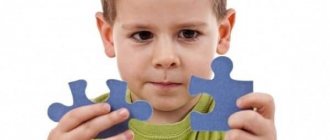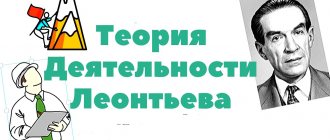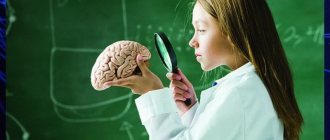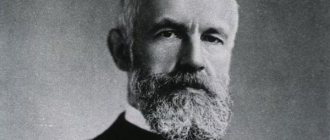Self-realization is the disclosure of personal potential. Aristotle began to develop this topic; now this issue is being studied by humanistic psychologists. Thus, Abraham Maslow believed that the need for self-realization is the main one, but it manifests itself only after the satisfaction of desires of a lower rank: social and physical. In practice, all human needs are directly related. The self-realization function allows you to achieve desired goals and gain respect in society.
A person tries to realize his potential
What types of self-actualization are there, and how to unlock your potential? This is something that they won’t teach you in social studies classes, but that will help you in life.
What is personal self-realization
Self-realization of a person is the ability to go through the path of self-knowledge and accept oneself, find one’s own niche and fully realize one’s abilities, reveal one’s full potential and enjoy every act and action.
Many psychologists note that the problem of self-realization requires comprehensive study and professional solutions. In modern life, two categories of people are often found:
- the first category spends many years searching for itself, but plunges into the stormy ocean of life without realizing its unique capabilities and talents;
- the second category makes no attempt to reveal itself without thinking about what self-realization is and lives the allotted years in vain.
Self-realization in psychology consists of two criteria:
- the fullest possible realization of the abilities and talents that nature has endowed a person with, or those acquired in the process of self-development. This is also called self-actualization of the individual;
- the result achieved by a person in the process of realizing talents, knowledge, and skills that are assessed by the individual as part of a successful and fulfilling life.
Self-realization in a person’s life is a long process during which innate talents and acquired skills are developed and applied in everyday conditions. In society, such people are perceived as accomplished, psychologically stable individuals.
The psychology of personality realization involves several factors that are important for achieving certain heights in life:
- to know the essence intellectually;
- accept your uniqueness;
- realize and accept your own resilience;
- make a correct assessment of your own personality;
- work daily on self-improvement and expansion of abilities. Read more about the need for self-improvement in this article.
Important! Self-realization is a continuous process of applying volitional efforts in a certain field of activity.
Cause of "eclipse"
When a person is still a child, he knows his nature intuitively. He doesn’t wonder what to do, but simply does what he WANTS. The child does not know how to suppress himself; his creative source is in full swing. They draw, sing, compose, create something with their own hands, invent something - without fear and even without thoughts. He simply realizes himself FREELY.
As we get older, this natural ability begins to be suppressed. This happens gradually and imperceptibly, but leads to the fact that an adult is no longer able to go beyond the “scheme” that was imposed on him by his parents, public opinion, or himself. The last thing is the worst thing, this is an already acquired ability - to oppress oneself, accepted by the rational mind. And a person, like an automaton, begins to do in life what is “needed to achieve the goal” and becomes inert. And often these very “goals” are not his real desires at all, but a substitution.
On a conscious level, we see only the result of this - internal irritation and the feeling that everything in life seems to be stable and normal, but there is no real joy. It's like you no longer feel alive. Irritation grows, but understanding of the real reason for this state of affairs is deeply suppressed.
This is the main disease of society. Even among those who are engaged in self-development, there are many people who do not see the direction of THEIR true path and cannot even imagine how to find it, how to develop what is given by nature and succeed in it.
We all (usually) find ourselves in situations where we experience parental pressure or the weight of social conditioning. Some people manage to overcome this, while others remain a slave to circumstances for the rest of their lives.
On your way, do not pay attention to insults and envy from other people if this happens, but you still need to read about whether you should react indifferently when you are insulted.
Problems of self-realization
Famous psychologists, philosophers, and social scientists have devoted their works to issues of personal fulfillment. Aristotle wrote that the highest happiness can only be achieved through the realization of innate and developed talents.
Maslow spent a lot of time studying aspects of self-actualization. The scientist argued that the need for self-realization and expression of the inner world is located at the top of the pyramid of personal needs. This is a difficult task, because initially it is necessary to overcome physiological needs, feel safe, understand social factors - find friends, love.
According to statistics, only 4% of people can reach the top of the pyramid of needs. Self-realization of an individual in society by 40% allows a person to feel like a happy and full-fledged person.
There is no doubt about the statement that the most important component of a full, harmonious, happy life is the opportunity to use all creative and professional potential.
As a rule, on the path of self-knowledge and development, a person often experiences problems of a psychological nature - a discrepancy between intellectual and energy potential, level of skills and the degree of realization of experience in the real world. Self-realization of an individual in society and in relationships can be difficult for certain reasons:
- living in an unfavorable geographical area;
- physical limitations - poor vision or hearing.
It is important! The discrepancy between aspirations for self-realization and the true capabilities of the individual can lead to pathological deviations in the psyche.
Psychologists identify the main stress factor – the cessation of the prospect of realizing one’s own talents and skills. For example, a promising athlete who was involved in an accident uses a wheelchair. This state of affairs does not allow a person to fully demonstrate his abilities. This will inevitably lead to depression in the future.
Another example is the termination of funding for a successful scientific project. In this regard, professional self-realization of a scientist is impossible.
Every woman experiences the need for self-realization as a mother. The inability to realize one’s direct destiny against the backdrop of constant loneliness transforms into alcohol addiction.
Article on psychology “Self-realization in creative activity”
SELF-ACTIVITY IN CREATIVE ACTIVITY
D.V. Tolmacheva
The problem of the relationship between the process of self-realization and creative activity is considered using the example of students. Educational activity is considered as a creative process.
Keywords:
self-realization, creative activity, creativity.
Self-realization of a person manifests itself in many areas of personality - fulfillment of desires, hopes, achievement of goals. S.I. Kudinov points out that the term “self-realization” was first introduced in the “Dictionary of Philosophy and Psychology.” In modern research, the interpretation of “self-realization” is presented as “realization of one’s own potential” [1].
Considering personality as a social quality of an individual, one can see a complex and stable system that consists of such elements as social position, social roles, value orientations, etc., determined by a person’s involvement in social relations. This multidimensionality of personality manifestations predetermines the complexity of the content of its self-realization [2].
According to S.P. Zueva, personal self-realization is possible when a person believes in his destiny, sees the meaning of life in him, i.e. realizes the need for self-realization in life. A person’s awareness of his integration into the world around him, his ability to harmoniously and constructively interact with other people and nature, is also an equally important condition for its implementation. However, self-realization becomes impossible if a person is not aware of his interests, abilities, and life preferences [1]. Self-realization is a continuous process through which a person is able to realize his potential strengths, he strives for development and realizes himself through responsible choice, creative initiative and self-construction. Thus, one can see that creativity, creative initiative is a necessary component of the process of personal self-realization.
Scientists consider the essence of the creative process from various approaches: from the point of view of “reorganizing existing experience to form new combinations on its basis” (A. Matejko), creating something new in a situation where a problem-irritant causes the formation of a dominant, around which the necessary to solve the stock of past experience (V.M. Bekhterev), as “the creation of a new product through action” (K. Rogers) or as “human activity to transform reality (both natural and social), culminating in the creation of a new original product; the process of constructive transformations of information and the creation of innovative results, subjectively and objectively significant” [3].
Definition of creative, or creative (lat. creato
– creation, creation) of activity in psychological and pedagogical literature is considered as amateur activity. It covers the changes that occur in reality, pushes human limits of possibility and acts as a way of self-affirmation, self-expression and self-realization of the individual in the process of creating spiritual and material values (S.L. Rubinstein, A.N. Leontiev, L.S. Vygotsky, D. B. Bogoyavlenskaya, N.I. Druzhinin, etc.).
The word “creativity” in modern science is considered as “creativity”. This is a personality trait that consists in the manifestation of socially significant creative activity. But there are also attempts to distinguish between these two concepts: procedural-effective characteristics relate to creativity, and subjective-conditional ones - to creativity. In accordance with this approach, creativity is a person’s predisposition to creativity, and the creative process is a real manifestation of creativity [4].
A derivative of the realization of unique potentials by an individual in a certain area is creativity. The manifestation of creativity can be seen in such types of activities as scientific, artistic, industrial, technical and many others. etc. As A. Maslow emphasizes, the manifestation of true creativity can be seen not only in science or art, but also in everyday life. Such activity acts as a method and indicator of self-realization and self-expression [5]. And according to O.V. Romakh there is a connection between the process of creativity and the realization of human abilities in socially significant activities, which is self-realization [6]. Thus, creative activity acts as a kind of amateur activity, which covers not only changes in reality, but also the process of self-realization of the individual. The process of self-realization is carried out through the creation of both spiritual and material values that expand the limits of humanity's capabilities.
Simultaneous self-realization of a person in various areas is the most favorable, because Having self-realization in only one area, a person is not able to become harmonious and happy. Such a person may remain one-sidedly developed and defective. A person has the opportunity to satisfy his physiological needs (lower-level needs) if he is included in various social structures [5]. However, it is in creative activity that a person is able to achieve the highest manifestation of activity and self-realization.
The development of creativity, creative components in educational activities has more than once become the subject of research by scientists (O.L. Berak, 1985; M. Wertheimer, 1987; V.V. Gagai, 2004; O.G. Berestova, I.A. Dubinina, 2006 ; A.A. Brudny, 2010). The creative connection between teacher and student can revolutionize the entire teaching and educational process to a qualitatively new level. The main side on the creative path of students is procedural, methods of comprehending knowledge. In order for students to develop skills such as independent cognition and the desire to solve problems creatively, it is necessary to include them in similar activities that would encourage them to demonstrate independence and activity at various levels [7].
The purpose of the study was to study the relationship between creative educational activity and personal self-realization using the example of students. Educational activity is considered in line with creative manifestation.
We assumed that personal self-realization occurs in creative activity and that there is a certain relationship between creativity and self-realization.
Methodology.
The following techniques were used as psychodiagnostic tools:
- Self-actualization test (A.V. Lazukin), (adapted by N.F. Kalin “SAMOAL”, 1998) is aimed at determining the level of self-actualization of an individual. The subjects are offered 100 paired statements, from which during the survey they must choose one, distributed across 11 scales [8. pp. 122–126].
- The “Diagnostics of Nonverbal Creativity” technique (E. Torrence), (adapted by A.N. Voronin, 1994) is a set of pictures with a certain set of elements (lines), using which the subjects need to complete the picture to some meaningful image. This version of the test uses 6 pictures, which do not duplicate each other in their initial elements and give the most reliable results. The test uses the following indicators of creativity: originality (Op), which reveals the degree of dissimilarity of the image created by the subject from the images of other subjects (statistical rarity of the answer); uniqueness (UN), defined as the sum of completed tasks that have no analogues in the sample (atlas of pictures) [9. pp. 4–39].
Sample.
The study involved 80 people aged 17 to 21 years. The total sample was divided into two groups. The basis for dividing into groups was educational affiliation. Test students of the Kyrgyz State Music College named after. M. Kurenkeeva (KSMU, n=40) were assigned to the first group, students of the Bishkek Music and Pedagogical College named after. T. Ermatova (BMPC, n=40) – to the second. The choice of this category is due to the fact that during student years the creative personality of the future specialist is being formed, whose main task is to make growth and self-improvement the goal of further personal and professional development. In this regard, it is necessary to consider self-actualization as a process that has its own characteristics of manifestation in educational and professional activities.
Results and its discussion.
Analysis of descriptive statistics was carried out using the statistical software package SPSS 22.0. (Russian version). For statistical analysis of the obtained data, we used the Kolmogorov-Smirnov test for one sample, Univariate analysis of variance. The Kolmogorov-Smirnov test for one sample determines the normality of the distribution. According to the data obtained, p<0.05, which indicates a “non-normal distribution.”
Results of the SAMOAL method
According to the methodology, the following differences were obtained (Table 1).
Table 1 – Average values on the scales of the “SAMOAL” method in two groups
Note:
* - differences are significant at p < 0.05.
As can be seen from Table 1, indicators on the “ Values”
” and “
Spontaneity
” are different for the two groups.
KSMU students
scored the maximum Values A high score speaks of them as people who share the values of a self-actualizing personality. A. Maslow included truth, kindness, beauty, integrity, lack of duality, vitality, uniqueness, perfection, justice, self-sufficiency, etc. among such qualities [10]. If a person gives preference to such values, it means that he strives for a harmonious existence and a healthy relationship with people. This is due to the fact that from childhood, musical individuals have the opportunity to receive not only a general education, but they also enter the world of culture, which instills in them the above listed values and roots them in their personality. While for BMPC students this indicator is at an average level. This may be due to the fact that inclusion in the cultural sphere occurs much later than among representatives of the first group and less frequently, since their educational and professional activities are different.
Scale indicator “ Spontaneity”
» among KSMU students is at a high level, and among BMPK students – at a low level. This quality stems from self-confidence and trust in the world around us. The ability for spontaneous behavior is frustrated by cultural norms; in its natural form it can only be observed in young children. Perhaps this is due to the fact that students of the first group more often find themselves in situations where behavior becomes spontaneous; such situations, for example, can arise while playing an instrument. A musician finds himself in a stressful situation and sometimes, out of excitement, can forget the notes, and this is where an element of spontaneity and improvisation is required to get out of the current situation.
High scores were also obtained on the following scales: “ Time orientation
”, which corresponds to a person who lives in the present and does not postpone his life for “later”. Respondents well understand the existential value of life “here and now.” They are able to enjoy the present moment without comparing it with the past. This may be due to the specifics of their activities. The emotional component of the activities of student musicians of both groups can only be experienced at the moment, and it is impossible to postpone it until “later”.
«Need for cognition
“Both groups found a high indicator
,
which is typical for a self-actualizing person who is always open to new impressions. Respondents experience a disinterested thirst for something new, an interest in objects that are not always associated with the direct satisfaction of their needs. This happens because in the field of art there is an opportunity to obtain diverse knowledge. And music students do not miss the opportunity to acquire new cultural experiences.
"Striving for creativity or creativity"
– this indicator is an integral attribute of a self-actualizing personality.
In other words, this indicator can be called a creative attitude to life. In both groups, the indicators are at a high level and do not have significant differences, however, in mathematical terms, it is still higher in the first group. “Flexibility in communication,”
which indicates authentic interaction with others, and the ability for self-disclosure are also slightly higher in the first group. People with a high score on this scale are focused on personal communication, are not inclined to resort to falsehood or manipulation, and do not confuse self-disclosure with self-presentation - a strategy and tactics for managing the impression made. This can be explained by the fact that cultural education instills sincere perception and the same return. Therefore, musical people are no exception.
Low scores were identified on the following scales: “ View of human nature
", according to this scale, students do not believe in people, in the power of human capabilities. Perhaps this is due to the fact that a musical personality is most often focused only on his own capabilities, and there is no place to wait for help. There is only you and your talent.
"Autonomy"
which tells us that full and independent functioning is impossible. This may be due to the fact that our sample consists of students, whose creative expression to some extent still depends on the teachers around them. Therefore, this indicator does not have the opportunity to fully manifest itself to date.
"Self Understanding"
– a low score is typical for insecure people who rely on the opinions of others. D. Riesman called such people “externally oriented” as opposed to “internally oriented.” Perhaps now students are focused on some kind of “ideal” in performance and their own understanding does not always coincide with the technical capabilities of the student at the moment. In this regard, students cannot fully understand what they really are like in the process of playing a musical instrument.
Often, the indicators of “Self-Understanding” and “Autosympathy” are related to each other. This can also be seen in our sample. "Autosympathy"
– low indicators are typical for people who are anxious and lack self-confidence.
On the “Contact”
, respondents had a low level. In this questionnaire, this scale is presented as a general predisposition to mutually useful and pleasant contacts with other people. Perhaps this is due to the finely organized inner world of the musician. Creative people are prone to self-reflection.
In the method “Diagnostics of non-verbal creativity”
significant indicators are
“Originality” and “Uniqueness”.
If the originality of the drawing was 1.00, then such a drawing was recognized as unique. Additionally, the uniqueness index was calculated, defined as the number of pictures for a given subject. According to the data obtained, the average indicator. Since the test is used to diagnose nonverbal creativity, the names of the pictures given by the subjects themselves are excluded from subsequent analysis and are used only as an aid to understanding the essence of the picture.
According to the results of the psychodiagnostic study presented in Table 2, differences between students of KSMU and BMPC were identified both on the “Originality” scale and on the “Uniqueness” scale:
Table 2 – Average values on the scales of the “Diagnostics of Nonverbal Creativity” method by Torrance, adapted by A.N.
Voronin in two groups Note:
**- differences are significant at p < 0.01.
Based on this table, we can say that representatives of KSMU are more inclined to display such qualities as originality and uniqueness than students of BMPC. Perhaps this is due to the fact that students at a music school, to a greater extent than at a music pedagogical school, express their creativity through non-verbal language. This manifests itself during the performance of the work and its listening. The performer or listener must penetrate into the matter of the musical work, imagine what the composer wanted to convey. This type of work contributes to the development of non-verbal creativity. While BMPC students are most often faced with the task of expressing their creativity through the word. This institution trains future teachers, music and pedagogical workers. The peculiarity of their work is related to the expression of their thoughts through words more often than through music. Perhaps this is the reason why their level of nonverbal creativity is lower.
Correlation analysis made it possible to establish the relationship between various scales. Statistically significant correlations were established between the scales of the self-actualization test by A.V. Lazukin, adapted by N.F. Kalina “SAMOAL” and according to Torrence’s method “Completing Pictures” in adaptation by A.N. Voronina. The results obtained are presented in Table 3.
Table 3 – Pair correlation coefficients between the indicators of the scales of the self-actualization test by A.V.
Lazukin and Torrance’s “Picture Completion” methods Notes:
**- differences are significant at p < 0.01; * – p < 0.05.
There is a positive relationship on the “Time Orientation” and “Originality and Uniqueness” scales (at p≤0.01). Creative activity cannot be postponed “for later”. A person can improve his skills only in the present tense. Inspiration cannot be planned over time; it is spontaneous in nature. This is one example where time and creative activity are interconnected from each other.
A positive relationship was found between the indicators of the “Values” and “Originality (at p≤0.01) and Uniqueness” (at p≤0.05) scales. These indicators indicate that respondents with such qualities as truth, integrity, uniqueness, perfection, and justice can quickly find a response in creative activity. The preference for these values indicates a desire for a harmonious existence and healthy relationships.
Table 3 also shows a positive correlation between the “View of Human Nature” and “Originality” scales. It is common for a creative person to show interest in people of similar creative nature. Thus, the more a person is predisposed to creativity, the easier it is for him to establish sincere and harmonious interpersonal relationships.
There is also a positive correlation between the “Autonomy” and “Originality and Uniqueness” scales. Respondents with a high level of creative activity are more inclined to autonomy. Due to the fact that their horizons are much broader, they have their own opinions on everyday situations and more.
A positive relationship was also found between the indicators of the “Self-Understanding” and “Originality and Uniqueness” scales. Thus, it turns out that the higher a person’s level of creativity, the more he is inclined to listen to himself, his own essence. Such people are not inclined to replace their own tastes and assessments with external social standards. They completely trust their choices and their intuition.
Table 3 also shows a positive correlation between the “Autosympathy” and “Originality” scales. This suggests that the more successfully a person creates, the more self-confident he is, which serves as a source of stable adequacy of self-esteem.
Thus, the study allows us to draw the following conclusions
:
Self-realization is a continuous process through which a person can realize his potential strengths, the meaning of life and purpose in the world. Every person strives for development and realizes himself through responsible choice, self-construction and creative initiative.
Transformation of personality, its self-development and enrichment, increasing the level of self-esteem and self-esteem - all these changes occur in the process of creativity. The subjective basis for self-affirmation is that a creatively finely organized person becomes more interesting, first of all, for himself. But without special pedagogical influences, self-realization will not reach its peak, even if it is initially a need. In this regard, creating conditions for free self-determination and creative self-realization of students is the primary task of all educational institutions.
An experimental study showed that the process of self-realization is more present among KSMU students than among BMPC students. The level of non-verbal creativity in terms of such indicators as originality and uniqueness is also much higher among KSMU students than among BMPC students. Among music school students, there is no obvious predominance of one type of motivation: both tendencies are represented equally. While among music teachers, the predominant motivation was to avoid failures. Correlation analysis showed the connection of such scales characterizing the process of self-realization as “time orientation”, “values”, “view of human nature”, “autonomy”, “self-understanding” and “autosympathy” with such components of creative activity as originality and uniqueness. A higher level of self-realization corresponds to a higher level of creative activity.
Literature
- Zueva, S.P. Self-realization of a person in professional activity [Text] / S.P. Zueva // Concept. – 2013. – No. 2 (18). – pp. 16–21.
- Pasovets, Yu. M. Self-realization of youth as a subject of sociocultural analysis [Text]: dis. ...cand. sociol. Sciences: 22.00.06 /Yu.M. Pasovets. – Kursk, 2006. – 203 p.
- Ilyin, E.P. Motivation and motives [Text] / E.P. Ilyin. – St. Petersburg: Peter, 2002. – 512 p.
- Popov, A.N. Modern approaches to the concept of creative activity of graduate students [Text] / A.N. Popov // Vector of science of Togliatti State University. Series: Pedagogy, psychology. – 2010. – No. 1. – P. 43–45.
- Maslow, A. Motivation and personality [Text] / A. Maslow: translation from English. Tatlybaeva A.M. – St. Petersburg: Eurasia, 1999. – 478 p.
- Romakh, O.V. Creativity as a condition for the formation and self-realization of a talented personality [Text] / O.V. Romakh, A.O. Sleptsova // Analytics of cultural studies. – 2011. – No. 19. – pp. 320–326.
- Barkhintseva, N.V. Independent creative cognitive activity of students [Electronic resource] / N.V. Barkhintseva. – 2008 – Access mode: https://festival.1september.ru/articles/504424/
- Kalin, N.F. Methodology of self-actualization of personality SAMOAL, adapted version (A.V. Lazukina) [Text] / N.F. Kalin // Psychological tests. – M.: Nauka, 2003. – P. 122–126.
- Voronin, A.N. Diagnostics of nonverbal creativity (short version of the Torrance test) [Text] / A.N. Voronin // Methods of psychological diagnostics V.2. M., 1994. – P. 4-39.
- Maslow, A.G. Far limits of the human psyche [Text] / A.G. Maslow. – St. Petersburg: Publishing house. group “Eurasia”, 1997. – 432 p.
13
Basic conditions for personal self-realization
Professor of the School of Social Ecology Salvatore Madde in his works identified factors that contribute to individual self-realization.
- Freedom as a condition for personal self-realization.
- A feeling of absolute control over your own life.
- The ability to adapt to living conditions.
- Spontaneity in decision making.
- Availability of creative potential.
It is important! One thing is obvious - full-fledged, successful social and creative self-realization of an individual is possible only if there is confidence in one’s own strengths and determination. Only with a certain passion for life, hard work and understanding of the set goal can you become a successful person.
Driving forces of self-realization
It is clear that creative and professional self-realization requires long and hard work. Often a person needs motivating factors; they need to be looked for among universal human values:
- need for recognition and respect;
- desire to set personal records;
- desire to show intelligence;
- desire to start a family;
- the need to occupy a certain social position.
It is important! Motivating factors are accessible and understandable. The ideals that a person strives for are varied. That is why there are no time limits for achieving your goals. But it is necessary to remember that only in activity does the self-realization of the individual occur.
How to realize yourself
If you want to receive recognition and money through your talents, you need to understand how you can benefit people through your purpose and life’s work. This is the key point. If your talents do not benefit people, you will not receive recognition and money as a symbol of realizing your destiny. Now I do not take into account receiving recognition and money as a manifestation of pride and superiority over other people, but as manifestations of my destiny and a gift from the Universe as a sign of the right path.
For example, I love making products in the style of root plastics, but it doesn’t bring in money, and I do it only for the soul. I really like to share my work and experience in the field of self-development. I do this on this blog, The Space of Inner Strength. Here I receive the money that I earned as gratitude from site visitors. This is exactly the type of activity that helps me not only get my life’s work, but also income as a measure of people’s gratitude for my work and the benefits I bring to people.
In the material world you need to look for opportunities to earn money, otherwise you will have to go into the forest and be a hermit. Of course, earnings should be based on a person's talents. Those who feel that they need to completely free themselves from the influence of money in this incarnation become hermits or go to a monastery.
To realize yourself, you need to take several steps.
Algorithm: how to realize yourself and how to find your purpose in life, your life’s work.
- Find your favorite thing and understand how through it you will benefit people. How will you help people solve their problems? There is no benefit to people, no money, no recognition, no business of your own that would feed you and bring you joy and satisfaction.
- The second step is to find the people who do this job best.
- Learn from these people. You need to learn only from the best and then the results will be the best, and not like everyone else.
- Start doing this business and hone your skills. The goal is to become the best in your field.
- Move to a professional level in your business and realize yourself in it 100%. Here you can go in 2 ways. 1 – do what you love yourself, 2 – teach it to other people.
This algorithm will allow you to find yourself, find your purpose in life, reveal your talents and become a happy person who will always have money and recognition.
Think about what you can do with your soul, and what benefit you can bring to people. This will be the first step towards realizing your talent. Find and read books on how to become an expert in your field.
At the 4th step, when you begin to do your job and hone your skills, a routine begins. Every day you need to learn and improve your level. Most people “merge” at this step, because... Not everyone can overcome routine. It turns out that the most difficult thing is not to find your purpose, your purpose in life, but to become a professional in your field.
Become a value to people
After you have become a professional in your field, you need to become an asset to people. To develop this level, it is recommended to provide the first 50 services in your direction for free.
Here you will practically raise your professional level and begin to receive clients and fame. Free services in your business of life will give grateful clients and its promotion in the market.
By going through the steps in this material, you can not only find yourself, your purpose in life, but also realize yourself as an individual and fully demonstrate your talents.
Your talents are endowed by God, and finding your purpose and persevering in discovering your talents is a vital necessity for every person.
I wish you to be a creative person who feels his purpose and benefits people!
Strategies for self-realization
What conditions for self-realization of young people does modern life dictate? First of all, this is the ability to respond to life’s demands, adapt to them, wisely choose and modify self-development strategies, while remaining psychologically and emotionally calm.
Human goals are dynamic and changing quantities. This explains why human self-realization is possible only through activity. At different periods of a person’s life, a person’s social status, priorities, health status and needs change. For example, psychologist Meg Jay believes that the best time for self-realization is the period between twenty and thirty-two years. She explains why in her book: “Important years. Why you shouldn’t put off life until later.” Are you around this age?
Thus, a person chooses a strategy, focusing on goals that are relevant to him. Here you can read about methods for finding a target.
A high school student strives to master a prestigious profession. To do this, he needs to enroll in a higher education institution. His main efforts are focused on acquiring a sufficient amount of knowledge. At this stage, the importance of education for self-realization is higher than other goals and tools.
At the next stage, the young man strives to realize himself in his chosen profession and build a career. In accordance with the set goal, the strategy is modified.
The tools that promote personal self-realization are adjusted when a man decides to start a family and become a father.
Areas of self-realization
People use different tools to achieve goals. You can reveal your talents, experience and abilities through creativity, science, sports, family, professional activity, creativity.
It is important! It is impossible to prove yourself in several areas at the same time; only a few cope with this task.
Professional self-realization
What is professional self-realization - achieving certain heights in the chosen field of work. In this case, self-realization is determined by the choice of profession and position. In this section we talk about professional growth.
Social self-realization
Involves achieving success in relationships with other people. The goal is to build relationships in society that will bring a sense of freedom, happiness and satisfaction. In this case, freedom, as a condition for personal self-realization, is important. We are talking about actions that an individual determines to be the only necessary ones, and not about those that are imposed by society. This could be volunteering, working at a shelter. Read more about the relationship here.
Creative self-realization
Creative self-realization of the individual presupposes the successful use of talents. At the same time, we are talking not only about art, but also about scientific activity. For creative individuals, it is vital to create a masterpiece in art or make a scientific discovery. These lofty aspirations become motivation for the creative self-realization of one’s talent.
It is important! Psychologists separately highlight self-realization for a woman, which, as a rule, is interpreted as a destiny laid down by nature - to find love, start a family, give birth to a child and raise him.
Creativity is constant involvement in the process
Of course, this activity gives energy, inspires, and it is clear that even creativity has its own cycles - periods of activity and sluggish routine, repetition, decline. And yet, this is a continuous process, requiring constant attention and effort, internal motivation for creative self-realization. Are you ready for this? Do you want this? Or, again, is it easier to go to work from nine to six, and when leaving it, with a clear conscience, leave all work problems at work?
In addition, do not forget that creative activity that generates income is an even more complex area, just like owning your own small business. And you also need to have the ability and desire to do this, because it’s not enough to create something - you need to sell it. And here the relationship with money is added to creative self-realization, how well it is established for you. And this, as you know, is a separate big topic, in conditions of creative self-realization it manifests itself for us from a new side and often requires separate study.
Practical recommendations
- First of all, you need to competently and realistically assess your own talents and abilities. To do this, psychologists recommend taking a sheet of paper, creating a calm, relaxing environment and writing down the qualities and hobbies that need to be worked on.
- Honestly and impartially write down all your character traits, regardless of how much they are valued by society.
- List all the types of activities in which you would like to realize yourself. Think about your dreams, what you wanted to do as a child. As psychologists note, childhood dreams reflect a person’s true personality. Next to each activity, write down the necessary character traits that will help you achieve success. After all, only in activity does self-realization of the individual occur.
- Compare the lists and this way you will see which type of activity suits you best. At first glance, this method is only suitable for teenagers who have not decided on a profession. However, according to statistics, most adults are not satisfied with their work and would like to change their type of activity. Such dissatisfaction is dictated, first of all, by the inability to correctly identify one’s talents and set life priorities.
- Many people mistakenly believe that they can only realize themselves in professional activities. However, this is a general misconception. It is necessary to abstract from traditional views and evaluate yourself comprehensively. It is quite possible that a person will be able to express himself while on vacation or while doing his favorite hobby. The main thing is that the process is enjoyable - this is the main sign that the self-realization strategy has been chosen correctly and is successful.
Watch the video - an expert’s opinion on personal self-realization and finding a worthy goal in life.
How to find your life's work
The next step is to find your life’s work, your purpose, your purpose in life. I’ll say right away that the purpose, the work of life, can change from time to time, or it can be constant. Perhaps now a person’s job is to consciously benefit the enterprise, in a year his life’s work will be to open his own business, and in 10 years, his purpose will be to serve people, and the business will need to be closed. Sometimes a person's purpose lies in one area throughout his life.
How to find your life's work at the moment? Sometimes it's easy, sometimes it's not. Perhaps a person, immersed in his real or childhood feelings, will immediately understand his purpose and find his business.
But it may also be that feelings will only show the general direction in which to move. For example, creativity. But painting, being a hairdresser or the art of owning a business is also all creativity. Even when washing dishes, you can use creativity.
Here, based on feelings, you need to start new directions in life, and try different options based on the feelings of the soul. We got busy with one thing, didn’t like something, confusion appeared in our feelings, and abandoned it. We started another business, our feelings became confused, and we gave up. After doing this several times, your intuition will increase significantly, and you will begin to feel the work of life. Through a series of mistakes and failures you will reach your destiny.
Of course, this method is not for everyone. Quitting what you are doing now in an attempt to start your own business, and there are no guarantees, is certainly not suitable for weak people. To make it easier to walk this path and find your business from the first attempts, we move on to the next step.
How to understand your talents
To find your purpose, your life's work, you need to understand your talents.
People often think that not everyone has talents, but this is not true.
Absolutely every person has his own talents, endowed by God, and the task of a person is to find and reveal them.
| 1 | Think about what you like to do most? |
| 2 | What topic do you like to search for information on the Internet? |
| 3 | What are you willing to do even if you don't get paid? |
Exactly what you are drawn to, what you like, and in what area you seek information for a feeling of satisfaction, is where your talents are hidden and need to be revealed.
Everything ingenious is simple. Your deepest desires show you your talents. Finding yourself, your purpose in life is finding your talents. Now that you understand how to look for talent, you can find your own business and move on to realizing yourself.











